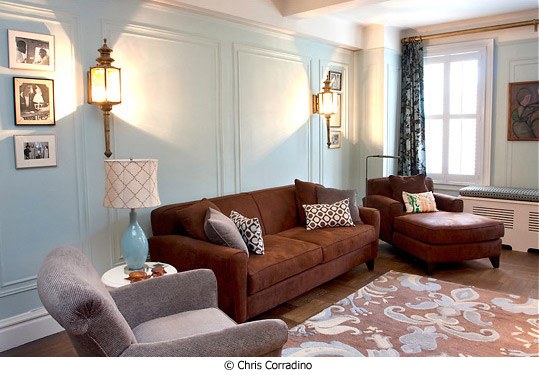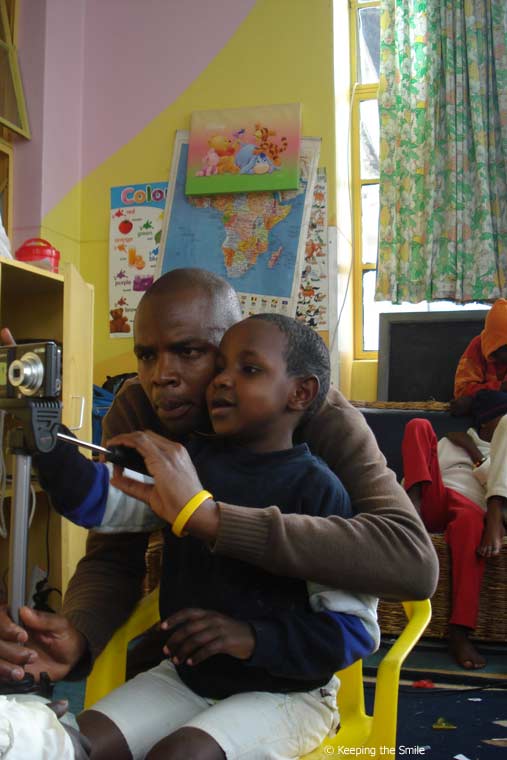
All too often, in the modern scheme of things, we as photographers are fearful of shadows. We bend over backwards (sometimes) to avoid shadows on the wall. And so we flood our scenes with fill light and background light and make a frantic effort to "kill the shadow".
But is this always necessary? We think not. Often the background shadow can be a major element of the composition, adding boldness and high drama to an otherwise banal photograph.
Wall shadows in photography were not always taboo. In the first four decades of the 20th century the uses of shadows were important compositional elements, especially in portraiture and theater and dance photography. One need only to examine the exciting work of Edward Steichen, Lotte Jacobi, Arnold Genthe, Barbara Morgan, Gertrude Kasebier, Horst, George Hoyningen-Huerne, Berenice Abbott, et al. Look at the pages of the (old) Vanity Fair, Vogue, Hound & Horn, etc. You will see a regular use of strong wall shadow in portraiture, fashion, glamour and theater photography.
So there is no need to fear the use of shadows especially when we use them emphatically to outline and reinforce our subject matter.
This month’s photograph, made by NYI Student Annie Angelopoulo, is a prime example of the effective use of shadow on the background wall. Annie is from Athens, Greece. No doubt she has studied the classic principles of Grecian art.
There are three well known NYI guidelines that form the approach to any photograph and almost any other work of art.
One needs, in the first place, to have strong subject matter — one with line, edge, form, shape, mass, texture, color (if shot in color), and contrast (if in black-and-white).
Second, there must be means employed to focus attention on that well chosen subject.
And, in the third place, even a complex composition needs to be simplified by the process of eliminating all unnecessary items but being sure to retain all that is important.
How are these three NYI guidelines demonstrated in Annie Angelopoulou's photograph?
The strong subject matter is obvious — a beautiful woman, an air of sophistication, a sense of mystique (who is she, really). She wears a very feminine "little black dress," something appropriate for an Audrey Hepburn type. But here is also a man's fedora and perhaps a suggestion of androgyny. Note the crucifx, too; possibly she is secretly devout. Who knows? Who really need to know? Are positive answers always demanded? Or is there room in our lives for mystery?
Now, in considering the methods for focusing attention on the subject, let us examine the cast shadow on the wall, clearly a powerful compositional element, and an excellent example of shadow photography.. Would this have been a good photograph without the shadow? Yes, certainly. But the great dark shadow adds so much more to the picture, don’t you think? The shadow constitutes a form of repetition of the subject matter, and subtle repetition almost always strengthens a picture. Note that we said subtle repetition. Excessive blatant repetition is tedious.
There is significance in the fact that the photographer made the shadow bigger than the subject. The light was placed low and parallel to the subject's face, thus projecting the shadow above, beyond, and larger than the face. The essential shape of the subject is retained, but the dark shadow only suggests but does not clearly define the actual beauty here. Therefore, can we surmise that there is more to this woman — something larger, darker, more mysterious?
Annie Angeloupou also made excellent use of the so called Rule of Thirds, that ubiquitous compositional suggestion. The imbalance created by taking the subject out of the center makes the photograph far more interesting than it would have been otherwise. For we sense that this mysterious woman has suddenly turned her head to her right and is looking off down a hallway or arcade as someone approaches. A lover, perhaps? Or a killer?
Simplifying a photograph is the final step in composition. Count the items left in the photograph as presented. There are seven: the woman, her shadow, the cigarette-and-holder, the hat, the dress, the crucifix. A very simple assemblage. A beautiful one, too because we cannot conceive of anything else being added. To do so would be to gild the lily.






